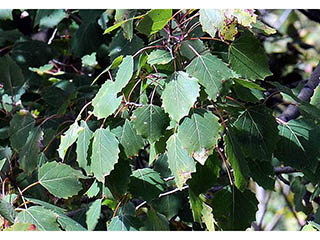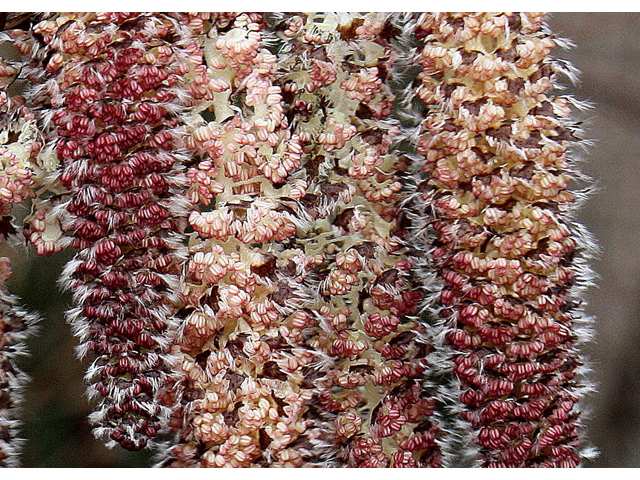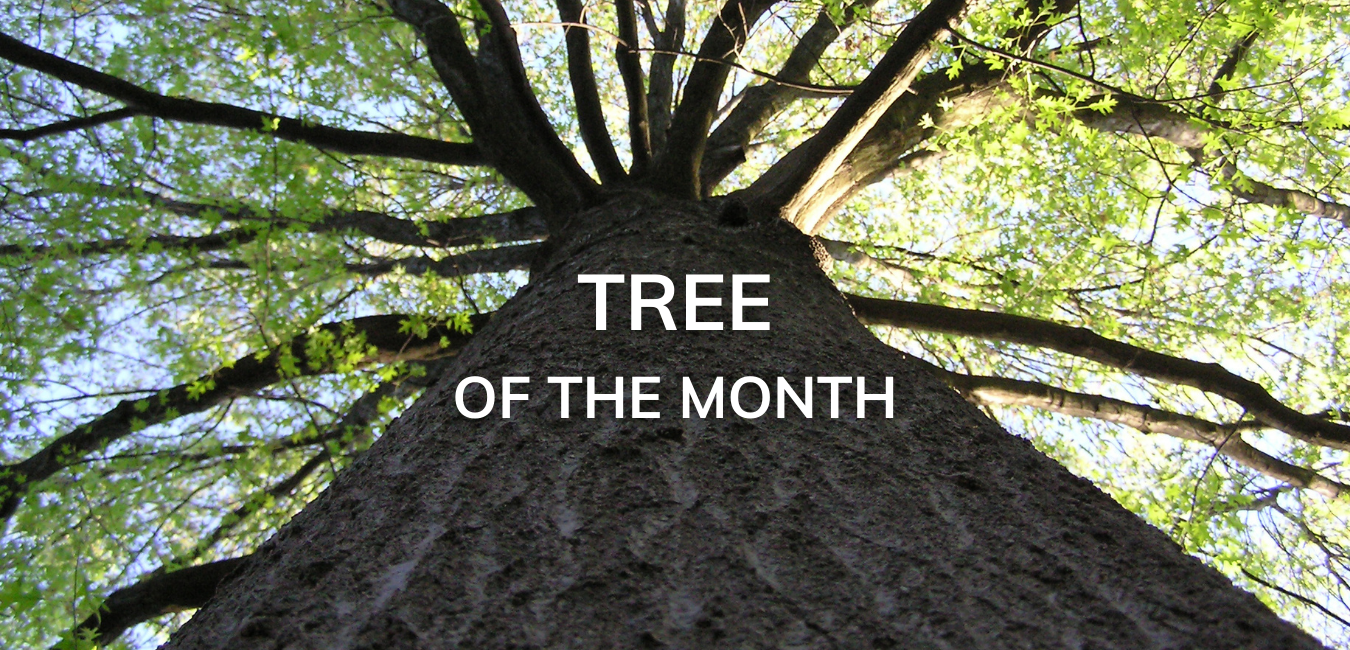
Photo: James Reveal 
Photo: R.W. Smith
The largetooth aspen is a broadleaved hardwood tree most commonly found in the southern regions of Northwestern Ontario, however, a separate stand also grows in southwestern Ontario. The scientific name of a largetooth aspen (grandidentata) means large-toothed and represents the most recognizable aspect of this tree, its leaves. The leaves of a largetooth aspen are similar in look to trembling aspen but can be distinguished by larger, coarsely toothed, and uneven margins. The edges of the leaves are often compared to drawings of ocean waves. Similar to trembling aspens, the leaves of this tree are attached to branches by flat stalks. This makes them appear to be “trembling” in the wind. The bark of a largetooth aspen differs with age. The young bark is pale green to yellowish gray and becomes dark gray and deeply furrowed over time.
Largetooth aspen is a fast-growing species, growing up to 20m tall, 30cm in diameter, and 60 years of age. It prefers moist, fertile soils, and is often seen growing with trembling aspen, white birch, and balsam poplar. Largetooth aspen is an important species for regenerating forest growth after clearing of burning. Its roots grow quickly and help the soil retain moisture, while its branches provide shade for other species to thrive.
Many species benefit from largetooth aspens, including moose, elk, and rabbits, who eat the buds, bark, and twigs. As well, the leaves and flower buds sustain ruffed grouse with their most important food source, year-round.
Fun Fact: The inner bark of a largetooth aspen is green and can photosynthesize food before the leaves even emerge in spring!
References
https://www.ontario.ca/page/largetooth-aspen
https://www.uoguelph.ca/arboretum/thingstosee/trees/largetoothaspen
http://www.borealforest.org/trees/tree12.htm
http://ontariotrees.com/main/species.php?id=2135
Images Source: Wildflower Center Digital Library


